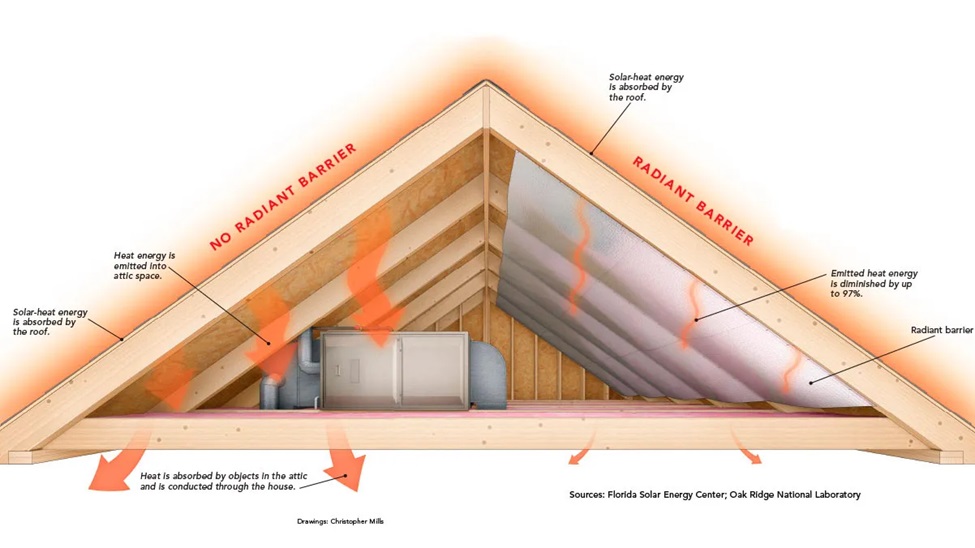In an unfinished attic, the goal of insulation is to maintain the rooms below at comfortable temperatures, keeping them cool in the summer and warm in the winter. This involves insulating only the attic floor, not the walls, and ensuring there are vents in the roof. In contrast, a finished attic requires insulation that helps keep the attic spaces comfortable year-round and this job is often left to professional installers such as https://atticconstruction.
How to Insulate a Finished Attic
A finished attic should be insulated similarly to the rest of the house, with insulation in the walls and ceiling.
If your attic is already finished, it likely has some insulation. However, many older attics are under-insulated, so it’s a good idea to increase the R-value where possible. Unfortunately, accessing all openings can be challenging. The ceiling will probably be inaccessible unless you remove the drywall or other finish materials. You may have better luck accessing the area behind sidewalls (also known as knee walls).
There are two primary methods to insulate a finished attic. If only the living space needs insulation, wrap the insulation around the room’s walls and ceiling and then continue along the floor of the non-living space. In this case, the area behind the knee wall will be uncomfortably hot or cold. To keep the area behind the sidewalls from freezing in winter, apply insulation from the roofline down to the floor.
A roof should be able to “breathe,” allowing air to flow from the eaves below to the roof above. This ventilation keeps the roof cold in winter, preventing ice dams that can damage your roof and home.
To ventilate an insulated roof, install special rafter vents. Staple these to the underside of the roof sheathing, between rafters. They allow air to move behind the insulation, keeping the roof cold while the room inside is insulated against the cold.
Ensure that the eave vents at the bottom of the rafter and the ridge vent or other vents at the top are unobstructed, allowing air to move freely.
How to Insulate an Unfinished Attic
When you think of insulation, your attic likely comes to mind—and for good reason. The attic is one of the primary areas where heat loss can occur in your home. Here’s how to insulate an unfinished attic.
Preparing an Attic for Insulation
Place planks (1×6 or 1×8) or plywood sheets across floor joists to improve your mobility in the attic. (Never step between joists, as you may break through the ceiling below.)
Ensure there are no uncovered electrical boxes or exposed wiring. Caulk any spaces where air can pass between the attic and the rooms below, paying special attention to areas around light fixtures, electrical wires, pipes, and ducts. Apply weatherstripping around the attic entryway. Check for proper venting to eliminate moisture retention.
Determine how much insulation to buy by following the directions in How to Calculate Your Insulation Needs. If you have existing insulation, you can layer a different type over the older material.
Installing a Vapor Barrier
Batts-and-blankets insulation often comes with a vapor-retarder facing, and some rigid foam insulation varieties require no additional barrier protection. For other types, it is advisable to install a thin polyethylene barrier on the underside of the insulation to prevent moisture from compromising the material.
(Note that in some hot and/or humid regions, this barrier should face the exterior side of the insulation.) Always use unfaced insulation near flues and chimneys, as well as when adding new insulation on top of old.
To Install Insulation Batts and Blankets
If using insulation with a vapor-retarder facing, position the material with the vapor-retardant side facing down.
Start at a wall and work towards the center of the attic floor or the entryway, carefully placing the insulation between the joists and ensuring a snug fit without compressing the material. Allow the insulation to overlap the top plate of the exterior wall. For added protection, install insulation across the tops of the joists as well. Cut each run to the appropriate length.
To Install Loose-Fill Insulation
Using a loose-fill blower, which can often be rented from your local home improvement store, start filling the space between the joists with insulation. Begin at the walls and slowly back up toward the center of the room or the attic entryway. Pay close attention to areas where insulation needs to fill in around obstructions, ensuring vents remain uncovered. It’s helpful to have a friend assist with this task; one person can hold the hose while the other controls the flow of insulation from the hopper.
With one person loading the blower as needed, start at the perimeter of the attic and work toward the attic access door. Completely and evenly fill every joist space with insulation, keeping attic vents uncovered. Use a rake to level any uneven spots.

